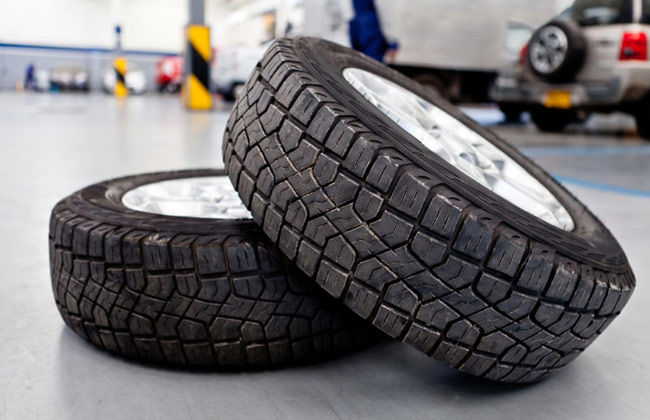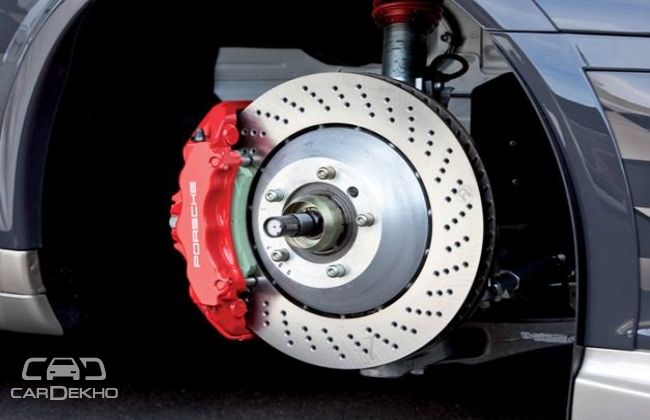Choosing the Perfect Set of Tyres for your Car
Published On Apr 09, 2013 02:14 PM By CarDekho
- 17 Comments
- Write a comment
In order to achieve effective braking, sufficient road-grip, easy handling, better comfort and complete safety during car rides, it is extremely important for a car owner not only to take good care of the tyres of their car but also to get them replaced with new ones whenever the need arises. Tyres are very important parts of a car and negligence of a car owner where they are concerned can cost the owner a huge fine or can even result in a serious accident.

Despite that, a general ignorance towards tyre-health has always been observed amongst car owners, and very often this ignorance has been found to result from lack of awareness of the severe hazards that poor tyre conditions can lead to. So, to help car owners better understand the what-how-when-why of choosing the perfect set of tyres for their car, here is a simple and easy guide that talks about the basic points involved in the decision making process of tyre-change.
The Timing
Before a car owner gets to selecting the right set of tyres for their car, they are expected to know the right timing for the change as an incorrect timing can prove to be quite disadvantageous for them, both in terms of safety as well as of expenses. Following are a few simple tips that can be used by car owners to determine when exactly the tyres need replacing:
* Signs of excessive wear on a tyre like a surface worn smooth, completely devoid of any tread-marks, or a ragged appearance are clear indicators that it is high time the tyre was replaced. Such tyres neither provide enough road grip nor prove to be of much help to the brake system.

* The safe limit of tread-wear for tyres is around 2/32 inches, after which it is best to get the old tyre replaced with a new one. To know whether or not a tyre has reached that limit of wear, all a person needs to do is check if the tread surface of the tyre has come to be level with the tread wear indicators molded in between its tread tracks. Wear up to or beyond that level calls for a replacement.
The Type
A number of factors govern the selection of the type of tyres for a passenger vehicle, each of which is just as important as the next for the safety and comfort of the car’s occupants. Given below is a brief description of those significant factors:
* The first choice that needs to made in such cases is that between tube-type and tubeless tyres. Although tubeless tyres are considerably costlier than tube-type tyres, they are safer, much more advanced and cause much less trouble than their tube-type counterparts. Plus, tubeless tyres do not necessarily require the wheels to be of alloy type, as is the common belief; all they need is the surety that the wheels are not corroded and, if possible, are coated with an anti-corrosion paint.
* Weather conditions also play an important role in the tyre selection process. People can either have individual sets of tyres to be used in different weather conditions such as summers, winters and wet weather for excellent performance in every weather, or they can go for a single all-weather, year-round set of tyres that performs reasonably well in every season, depending on their driving conditions.

* For people who are fast drivers or those who need to drive over long distances every day, long-lasting performance tyres that show exceptional resilience to wear are better. For others, who prefer to drive at lower speeds, it is better if they go for tyres with a lower speed rating.
* Road conditions on which a person usually drives their car also goes a long way into deciding the type of tyre that would suit their car. For those whose usual travel route includes a considerable share of rough road conditions, selecting a robust grade of all-terrain tyres is extremely important whereas for those who are frequent cruisers of well-built highways, sturdiness of tyres should not be a major concern.
The Size
Every car tyre comes branded with a special code on its side wall that specifies the size details of that particular tyre. Taking these specifications into account while selecting a new set of tyres is extremely important in order to make the right decision. Particularly when a person needs to buy not a complete set but only one or two new tyres, it is essential that the new tyres match exactly with the other (older) tyres.

For a code that looks something like ‘P205/65R15 94V’, following is how each part is to be read and how it affects the suitability of that particular tyre for a particular user:
* P: It signifies that the tyre has been specifically built for a passenger vehicle.
* 205: It signifies the tyre width, in other words, the distance between exterior sidewalls of the tyre when it is properly inflated, in mm. In case a user wishes to upsize the tyre, care should be taken not to choose a tyre that goes beyond an extra 20mm width than the original tyre. Also, it should be ensured that the tyres are not so wide that they would touch the wheel wells while turning.
* 65: It signifies the tyre profile, also known as tyre’s aspect ratio (height to width ratio), which is the height of the tyre’s sidewall depicted as a percentage of the tyre width. Whenever an old set of tyres is replaced by new ones, it is advised that the tyre profile of the new set be kept as similar to that of the old one as possible, even if changes are made to their tread width.
* R: It signifies that the tyre is of radial construction type.
* 15: It signifies the size, specifically the diameter, of the wheel for which the tyre has been designed, in inches. It is essential that the wheel size of the tyre that is chosen by the user matches perfectly with the diameter of the wheel on which the tyre has to be mounted, otherwise problems like lowering of tyre profile, decrease in sidewall flex during cornering and reduction in ride comfort can result.
* 94: It is an index number that indicates the load rating of the tyre, which means the maximum load that the tyre can bear at its maximum speed limit and, in this case, corresponds to 670kg.
* V: It signifies the speed rating of the tyre, which is the maximum speed limit for the tyre when it is carrying a load that corresponds with its load rating. In this particular case, it signifies that the tyre has been rated with a speed limit of 240kmph when it is carrying a load of 670kg. Paying special attention to speed rating is especially important for speed-lovers; they should always pick tyres that have a high speed rating for best results.
The Material
Significant characteristics of a tyre’s performance such as traction and treadwear depend immensely on the quality of the rubber compound of which the tyre is made, and so it is extremely important to know which kind of rubber compound is best suited to one’s needs when one thinks about getting one’s car’s tyres changed. Here are a few pointers that can come in handy while making that choice:
* The softer the rubber compound gets, the better road grip (or traction) the tyre provides. With increase in traction, the speed rating of the tyre also increases making it better and safer for high-speed cruisers. However, with increase in softness of the rubber, the tread wear of the tyre also increases, which corresponds to a smaller lifetime.
* As indication of the traction that the rubber compound of a particular tyre offers, indicator codes like ‘comfort’, ‘sport’ and ‘ultra-sport’ often come branded on the tyre, signifying increasing degrees of road-grip that the tyre can provide.

* The quality of the rubber compound also determines the amount of noise produced at the tyres when driving conditions make them approach the extreme limits of traction.
Other Factors
When it comes to getting a new set of something as important as tyres for one’s car, other than the factors that have been mentioned above, there are a few other specifications that must be considered before making the purchase:
* It is always better to go for tyres that are a bit more expensive but offer a better quality than to choose tyres that cost less but compromise on the quality, and hence the safety of the passengers. Before selecting a brand, a thorough research must be done by the buyer to find out the manufacturer that has the best manufacturing equipment, the highest quality standards and the most positive customer reviews.
* While paying strict attention to manufacturer’s quality standards is of vital importance for selecting the perfect set of tyres for one’s car, it is not very smart to pay a considerably high price for some ‘special added features’ that manufacturers have to offer in their tyres until and unless it is something really significant.

* Every tyre comes branded with the date of its manufacture in the form of the last four digits of a DOT code. Out of the four, the last two digits signify the year while the first two digits signify the week of the year in which the tyre was made. Buying tyres not more than 6 months old is the best option, but in no way should a buyer go for tyres that are more than a year old if they wish to derive a good performance from their tyres.
* If possible, the buyer should go for tyres that come with a good warranty scheme so as to avail the best benefits from the deal.










